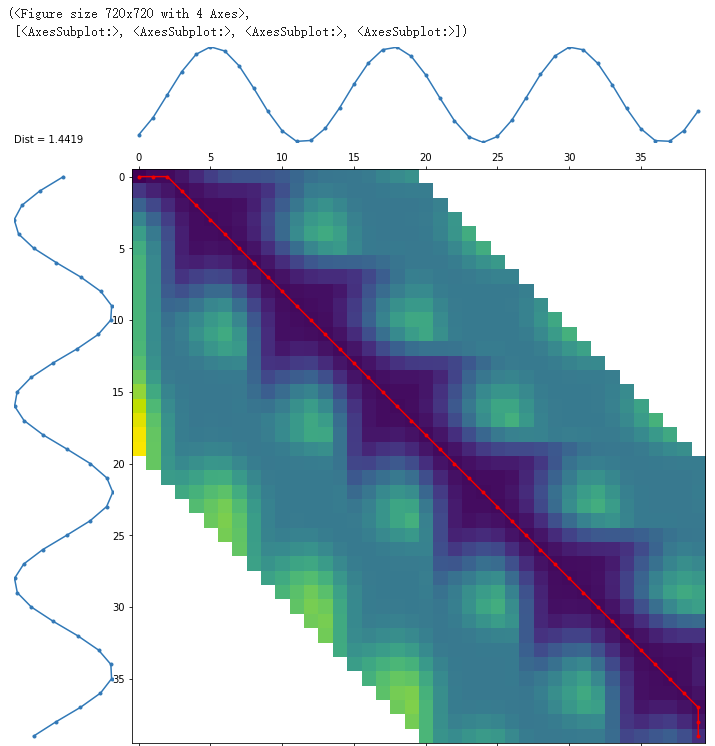# !pip3.9 install dtaidistance
# !pip3.9 install numpy
# !pip3.9 install matplotlib
from dtaidistance import dtw
from dtaidistance import dtw_visualisation as dtwvis
from random import sample
import numpy as np
import matplotlib.pyplot as plt
x = np.arange(0, 20, .5)
s1 = np.sin(x)
s2 = np.sin(x - 1)
path = dtw.warping_path(s1, s2)
dtwvis.plot_warping(s1, s2, path)
distance = dtw.distance(s1, s2)

d, paths = dtw.warping_paths(s1, s2, window=20)
best_path = dtw.best_path(paths)
dtwvis.plot_warpingpaths(s1, s2, paths, best_path)

# function that takes as input the number of neigbors of KNN and the # index of the time series in the test set, and returns one of the
# labels: WALKING, WALKING_UPSTAIRS, WALKING_DOWNSTAIRS, SITTING,
# STANDING, LAYING
def classifyNN(k:int, idx:int) -> str:
idxs=range(0,x_train.shape[0])
n=x_train.shape[0]
distances=[]
counters={}
c=1;
max_value=0
for r in range(n):
distances.append(dtw.distance(x_test[idx], x_train[idxs[r]],window=10,use_pruning=True))
NN=sorted(range(len(distances)), key=lambda i: distances[i], reverse=False)[:k]
for l in labels.values():
counters[l]=0
for r in NN:
l=labels[y_train[r]]
counters[l]+=1
if (counters[l])>max_value:
max_value=counters[l]
#print('NN(%d) has label %s' % (c,l))
c+=1
# find the label(s) with the highest frequency
keys = [k for k in counters if counters[k] == max_value]
# in case of a tie, return one at random
return (sample(keys,1)[0])
k=20
idx=3
plt.plot(x_test[idx], label=labels[y_test[idx]], color=colors[y_test[idx]-1], linewidth=2)
plt.xlabel('Samples @50Hz')
plt.legend(loc='upper left')
plt.tight_layout()
classifyNN(k,idx)




